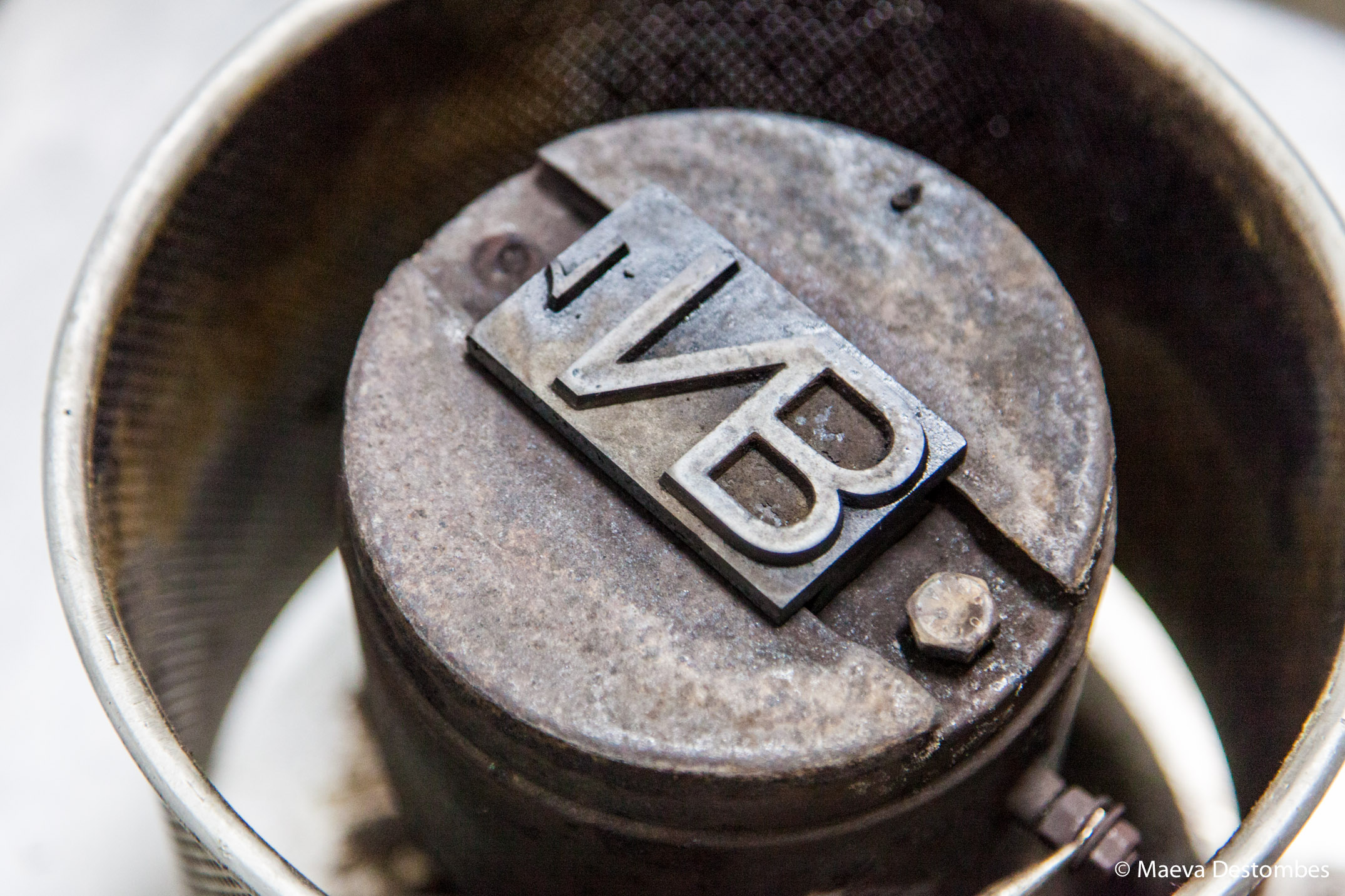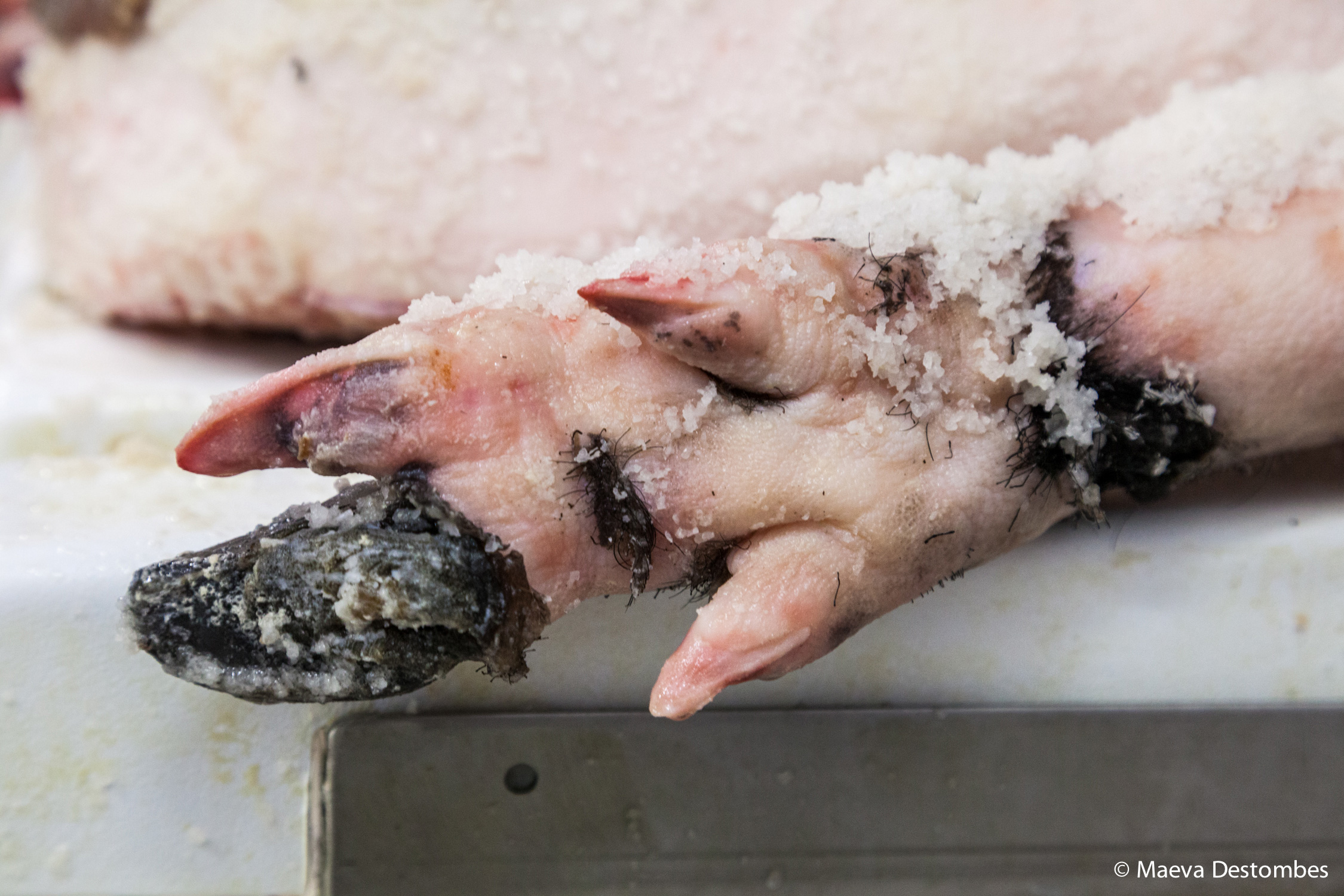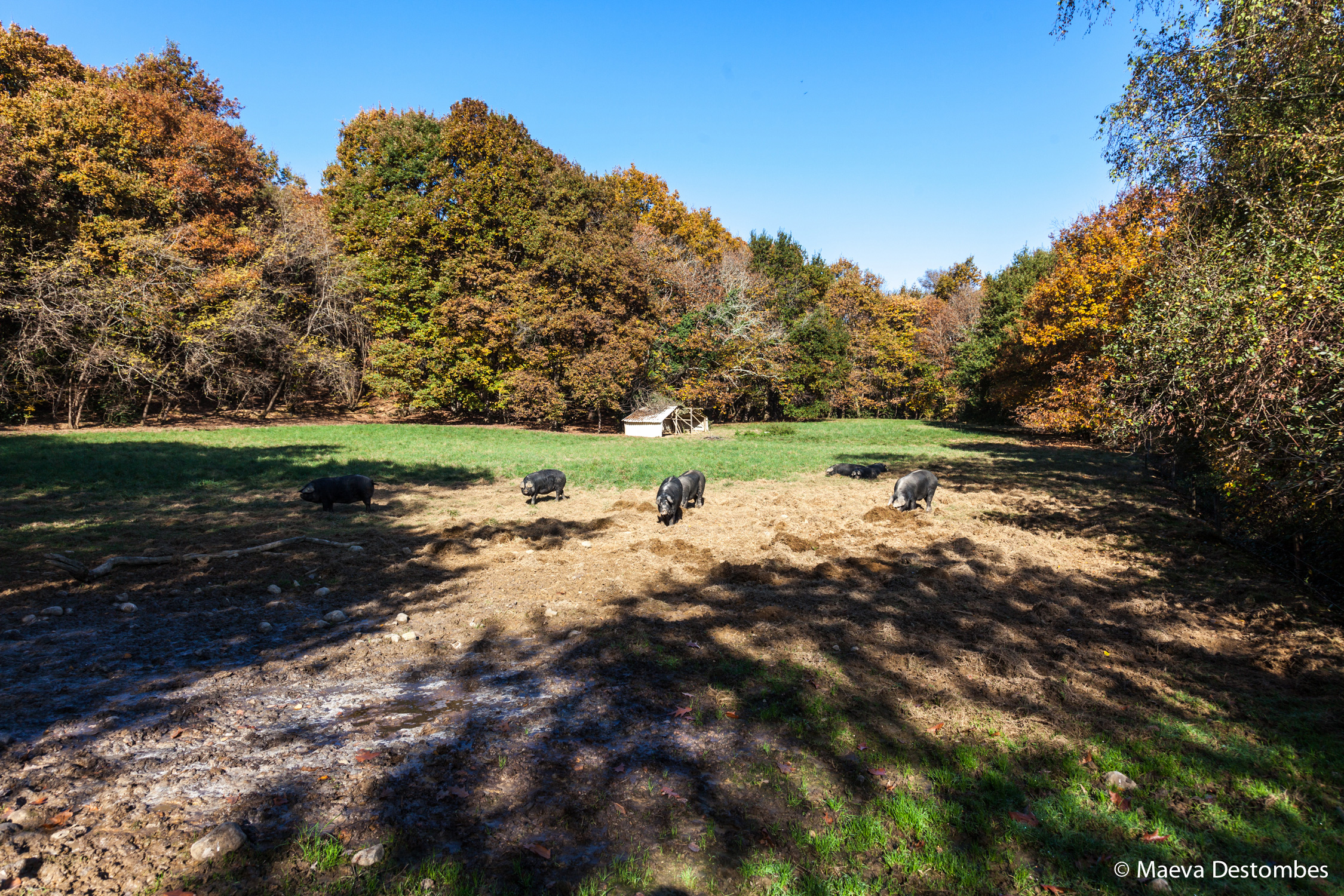
It could have disappeared. But with the tenacity of a handful of men, like a phoenix, it has risen from its ashes. Today, the Porc Noir de Bigorre produces one of the best hams in the world… and one of the most expensive! Focus on this thousand-year-old animal and an exceptional product that is still too little known.
Still rare on the shelves or in the food shops, the Porc Noir de Bigorre has come a long way… In 1981, the Gascon pig (that’s him!), which lives between the Pyrénées-Atlantiques, the Hautes-Pyrénées, the Gers and the Haute-Garonne, was doomed to disappear. At the time, there were only 30 sows and 2 boars left among the twenty or so breeders of the former Comté de Bigorre. From 28,000 pigs in 1930, the decline of the breed continued over the years to reach 500 head in 1970. Chronicle of a death foretold for a native pig that had known its hours of glory. The breed appeared in ancient times in Persia, and gradually became established around the Mediterranean during the Gallo-Roman period and the Middle Ages. All the farms in Bigorre and beyond had them. An essential element of the rural economy, it cost practically nothing and provided the peasants with one of the main sources of meat (ham, sausage, ventrèches, candied meat) and fat for the whole year (traditional cooking was done with pig fat). The piglets were sold to bring cash to the humble families of the area. But over time, judged to be too fatty, too slow, not very productive (7/8 pigs per litter) and unsuited to the conditions of intensive breeding, where the ham must be lean, thus banishing fat, it was slowly abandoned, passing from modernity to absolute archaism.
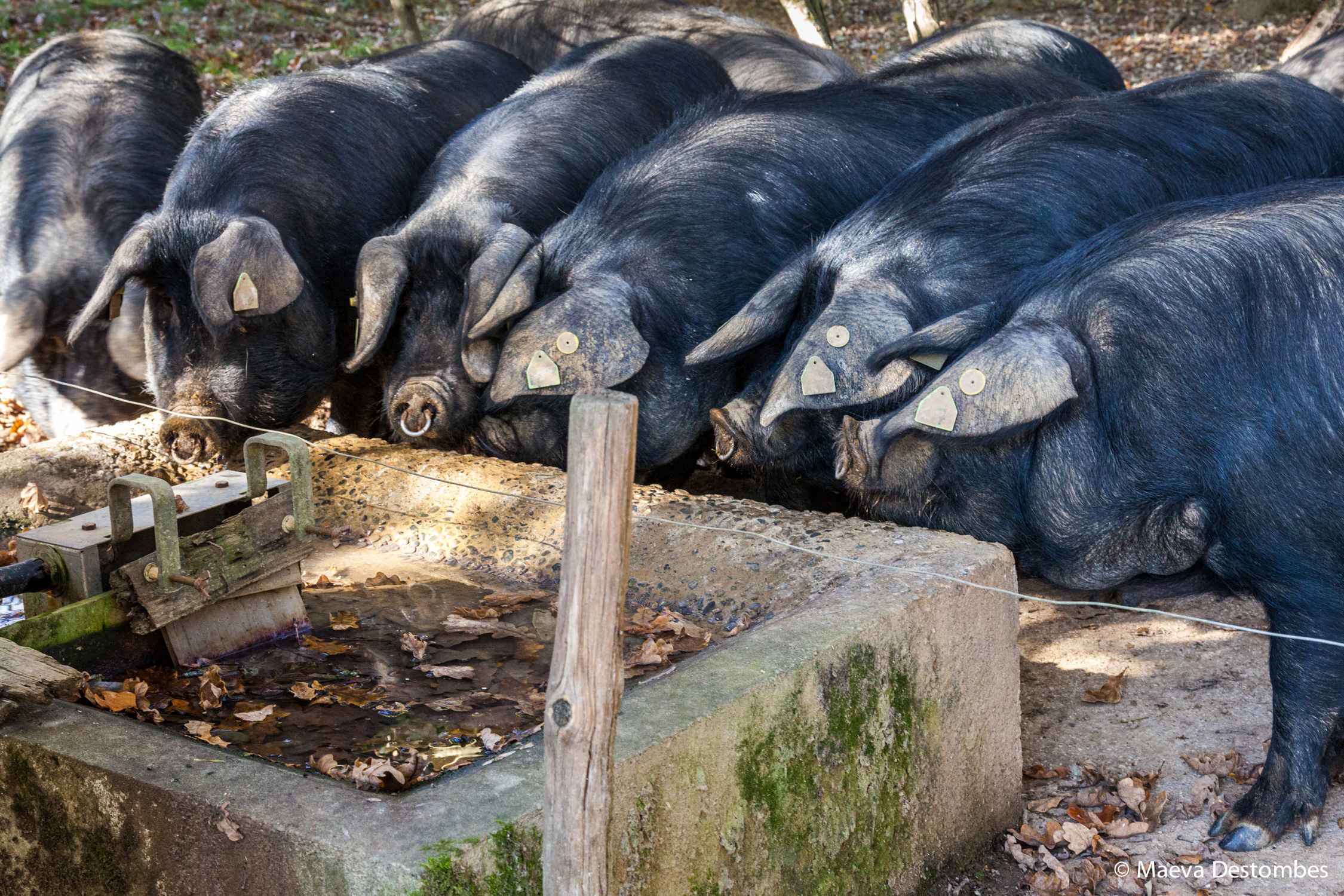
A SLOW AND LABORIOUS RESCUE OF THE GASCON PIG
Thanks to the tenacity of a group of breeders, pork butchers, salted meat producers and chefs, 30 years after the beginning of the rescue of the animal, while 9000 pigs are slaughtered each year, the reserve of black pigs from Bigorre amounts to 1200 sows. « But for the breed to be definitively saved, 1,500 sows are needed, » explains Marie Claire Uchan, director of the Porc Noir de Bigorre consortium. « In the 1980s, Armand Touzanne and other breeders wanted to give the Gascony pig back its emblematic place in its native region. They got together with the INRA to set up a programme to preserve the breed, in particular the way of crossing the remaining sows and boars. Year after year we have succeeded in reviving this breed. It took 10 years to draw up the specifications for the Porc Noir de Bigorre PDO. 1200 hectares of land are approved by the INAO to raise this Gascon pig. This sector, built in a team spirit to preserve the breed, brings together fattening breeders and breeding breeders who select the best males to fertilise the females and avoid inbreeding. Among these enthusiasts is Pierre Gandarias, a fattening breeder in Oursbelille with his cousin Jean-Pierre Clavé. Every morning, he goes round his herd to check the health of his little protégés, that they have water and food. And that none of them is isolated in its corner, a sign of a problem. « The Bigorre black pig is sociable, it likes to live in a group, » he explains. Always in a spirit of quality, « each farm has no more than 450 pigs and 20 per hectare », Marie-Claire emphasises. Pierre’s farm has 280 head.
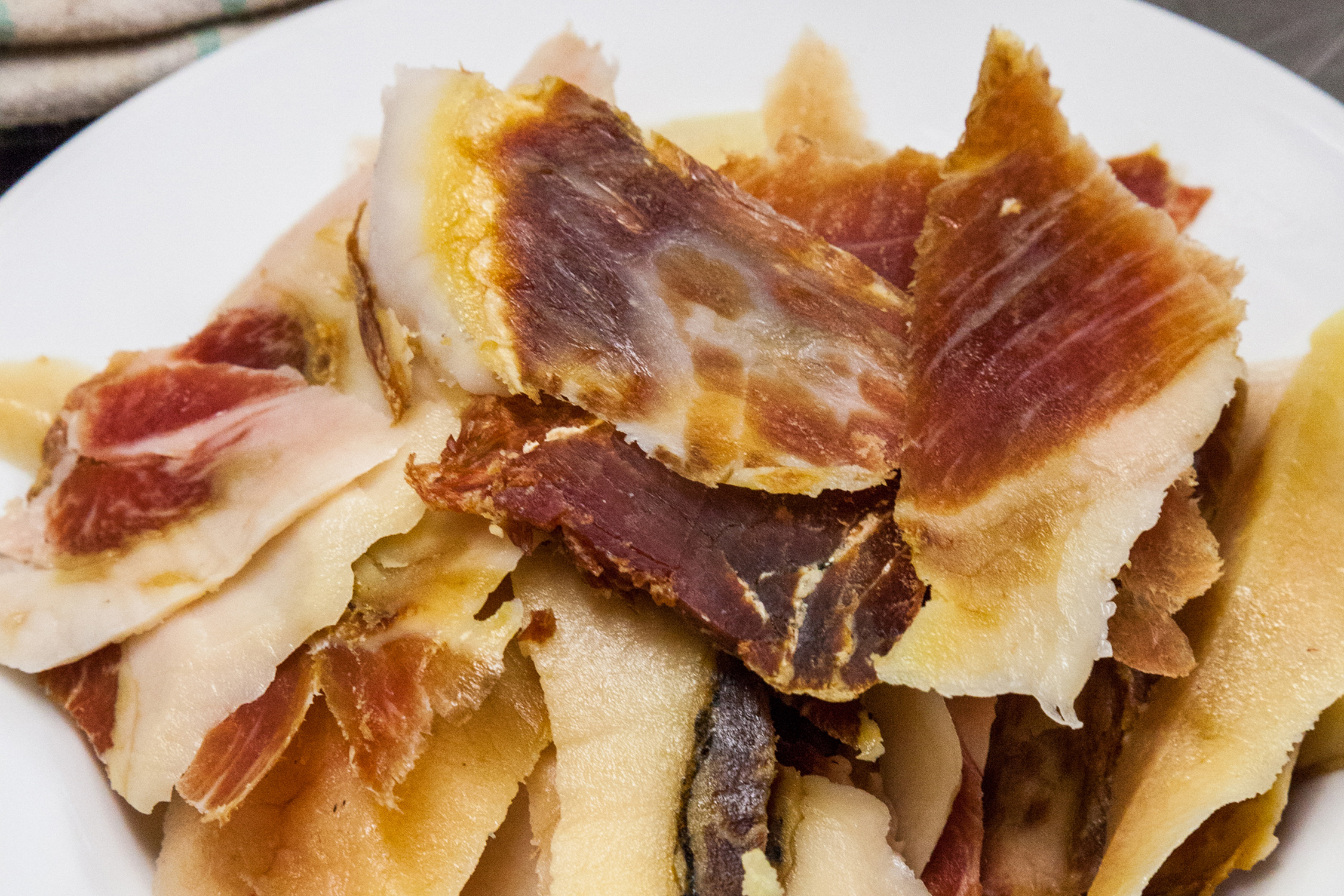
THE BLACK PIG FROM BIGORRE PRODUCES A HAM RICH IN GOOD FAT
Among its famous cousins, the Cerdo Ibérico or Iberian pig enjoys unparalleled fame with its Jamón Ibérico de Bellota or « pata negra » ham. However, the Porc Noir de Bigorre, which also has fine black pasta, has nothing to envy it. Covered with long, black, thick, muscular hair, beret-like ears that fall on its face, a moist snout adorned with a ring, observing its every move with its small, round, black eyes like marbles, the Porc Noir de Bigorre likes to run wild in the immense meadows bordered by undergrowth full of chestnut and oak trees, which provide it with its favourite food. Acorns and chestnuts, when not apples, medlars, cereals (triticale), grass (50% of its diet) or other environmental resources such as earthworms or insects, allow it to thicken and gain intramuscular fat rich in monounsaturated oleic and polyunsaturated linoleic acids. The return to favour of this material, which was once banned from our plates, is also a sign of a return to a healthier diet. Some fats are good and useful for our health, contrary to what the media have been hammering out for years. To obtain this « good » fat, patience and know-how are the key words. Although pigs can be slaughtered as early as 12 months of age, they are generally not slaughtered until they are 16 months old. Then, after the classic stages such as salting (with rock salt from the Adour basin), resting and drying, 36 months of maturing are necessary to obtain the Jambon Noir de Bigorre PDO, an exceptional product that is so melting and powerful in the mouth, with such a unique character that no one can forget its taste… The Porc Noir de Bigorre, the new Saint Gras which restores both its terroir and its history…
Copyright of the photos: Maeva Destombes. Any reproduction is strictly forbidden without the author’s permission.
